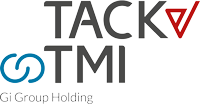Building Resilient Organisations in a Dynamic Work Landscape – An interview with Stefano Colli-Lanzi, CEO, GI Group Holding

Stefano Colli-Lanzi is the founder and CEO of Gi Group Holding, one of the world’s leading staffing and HR services companies. Established in 1998, Gi Group Holding has expanded its presence to over 30 countries under his leadership. Colli-Lanzi is also a professor of Business Economics at Università Cattolica del Sacro Cuore in Milan.
In this interview, he shares his insights on the evolving global demand for skills, the strategic importance of learning and development, and how businesses can build resilient, future-ready organisations in the face of accelerating change.
As the CEO of a leading labour market provider, how do you foresee the global demand for skills and talent evolving in 2025, particularly as multinational corporations adapt to rapid change?
I believe rapid changes in the global job market are making it increasingly difficult for multinational companies to keep pace with evolving skill demands and find the right talent. However, understanding current trends and challenges is the first step towards adapting effectively.
Geographic shifts also play a significant role. As companies expand into new markets, they need to understand and adapt to local economic conditions. While mature markets often face talent shortages, emerging markets may offer untapped talent pools. At the same time, younger generations are bringing new expectations and values to the workplace, which companies must recognise and address. Legal and regulatory changes across different countries, something we’ve experienced firsthand at GI Group Holding through our operations across 37 countries, add yet another layer of complexity.
With these complex global dynamics in mind, shifting markets, emerging technologies such as AI, and evolving workforce expectations, investing in talent and the right skills has never been more critical. One key area is Learning and Development, which is increasingly seen not just as a support function, but as a strategic driver of growth and adaptability.
So how can global companies design and execute L&D strategies that closely align with their evolving business objectives?
Learning and development (L&D) has long been a cost-efficient way to retrain and retain staff, but it hasn’t always been treated as a strategic priority. Today, shifting business environments are forcing companies to rethink this. It’s now essential to clearly identify and target the competencies needed within the organisation. Embedding L&D into the core of company strategy, and aligning it with business objectives, is essential to designing and delivering effective programs.
A core focus of L&D is building technical competencies that keep pace with constant change. In the past, companies could simply hire to fill skill gaps, but today, many of the skills needed don’t yet exist. With technology evolving so rapidly, organisations must take a proactive approach, developing these capabilities internally through a long-term, future-focused L&D strategy.
Equally important is the development of soft skills. As technology transforms how we work, qualities like communication, collaboration, adaptability, and problem-solving have become essential. These skills enable teams to operate effectively across diverse, multi-professional, and multicultural environments, and help businesses stay agile and competitive in times of rapid change
From my experience at GI Group Holding, it took us 26 years to build an end-to-end vision. This was possible through a disruptive, long-term approach to innovation, rethinking entire processes and maximising the use of technology. Just as crucial has been empowering employees to take ownership of their own skills development.
We’re in a time of uncertainty, with short-term disruptions causing layoffs and skill shortages in key industries. This is not just an HR issue, it’s a strategic one. Companies must be able to restructure thoughtfully, retain talent where possible, and use continuous upskilling to attract and grow their workforce.
A clearly defined L&D strategy plays a foundational role in equipping organisations for the future. But as disruption becomes the norm, from rapid technological advancement to shifting employee expectations, businesses must look beyond skills alone. Building true resilience requires a broader, forward-looking mindset that embraces change, fosters agility, and anticipates what’s next.
Could you expand on what emerging trends business leaders should focus on to create resilient, adaptive, and future-ready organisations in such a fast-changing world?
Business leaders must identify emerging trends to build resilient, adaptable, and future-ready organisations. One key trend is the challenge of attracting and retaining talent. With top talent in high demand, companies must position themselves as employers of choice, by promoting strong values, a clear vision, and a meaningful purpose that aligns with individual goals. A recent Gallup study supports this, revealing that what people want most from leaders is “hope and trust”. These are intangible yet powerful traits that inspire positivity and purpose, especially in uncertain times.
Another critical trend is addressing the psychological needs of employees, particularly engagement. Engaged employees who are given autonomy and feel connected to their teams are more motivated and likely to grow their competencies on the job. For me, people are the key enablers of any company activity, and fostering a culture of engagement directly supports performance and innovation.
This is especially relevant for younger generations, who sometimes feel a lack of hope. They often prioritise well-being and seek reassurance about their future. Unlike previous generations, they want to see companies investing in upskilling and reskilling, not just for productivity, but to show they won’t be left behind. They also value agile leadership that can make quick decisions and lead confidently through uncertainty.
Another focus is the integration of Artificial Intelligence into the workforce. Companies must not only leverage AI to enhance efficiency but also ensure it complements, rather than replaces, human strengths such as creativity, intuition, and strategic thinking. I have no doubt AI will transform many roles, especially in back-office and technical areas, whereas frontline jobs that rely on soft skills will grow in importance.
At GI Group Holding, we view technology as an enabler that helps people find jobs, but it’s the human element that ensures the right match. Understanding how to re-engineer work through AI while maximising human contribution is essential. That’s why L&D strategies must strike a balance, equipping people with both technical capabilities and the human skills needed to thrive in a tech-enhanced future.
Identifying emerging trends however is just one part of the equation. For business leaders, particularly CEOs of global organisations, the real challenge lies in translating those insights into meaningful action. In a world shaped by continuous disruption, sustained success depends not only on adapting to change, but also on leading with clarity, purpose, and long-term vision.
In this era of economic uncertainty and rapid technological change, what do you believe are the most critical priorities for global CEOs to drive sustainable growth and maintain a competitive advantage?
I believe every CEO of a global organisation must prioritise having a clear, shared vision to achieve long-term goals. Strong leadership involves taking a holistic approach, identifying solutions, responding to customer needs, and ensuring the business remains scalable and productive. A compelling vision that defines how things are done and why they matter, when communicated transparently, helps employees see the clearer picture, and where they fit in.
This shared vision fuels motivation, a critical driver of growth. Motivation can falter if the vision doesn’t align with individual values. That’s why it’s essential to communicate how each person contributes to the bigger picture. While a long-term vision is crucial, CEOs must stay agile and adapt to changing customer demands and market dynamics. At GI Group Holding, our vision has remained steady for 26 years, but our strategy has evolved in response to local and technological shifts.
Another priority is building internal expertise through upskilling and reskilling. Having in-house experts who understand and anticipate future trends is key. This is especially true for GI Group Holding where our key market is people, so by attracting, developing and nurturing our own people means we ‘walk the talk’ when dealing with clients.
From a more external perspective, staying competitive requires agility, innovation, and responsiveness to both global and local needs. Leveraging technology is vital for productivity, but so is understanding labour market shifts, local regulations, and the growing importance of sustainable work. As defined by the United Nations Brundtland Commission, sustainability means meeting present needs without compromising future generations. This extends beyond environmental concerns to how a business creates lasting value. It’s not just about generating wealth; it’s about investing in initiatives that benefit communities and society as a whole.
Ultimately, driving sustainable growth in today’s climate requires more than strategic vision, it demands action. For global leaders, translating priorities into tangible impact means rethinking how organisations attract, develop, and empower talent. GI Group Holding is a great case study of how a company can turn these priorities into real action by helping businesses adapt to changes in the job market and workplace
As a global leader in labour market solutions, can you expand on how GI Group Holding is shaping the future of work, particularly in helping businesses navigate this era of transformation and innovation?
One significant driver is identifying the right solutions, not only for our client companies but also for candidates. In the current climate of skills shortages, our focus is firmly on candidates. The true challenge lies in not just locating talent, but in enticing individuals to join us. Without successfully persuading them, they are likely to pursue opportunities elsewhere.
Training becomes essential when the skills required just aren’t available in the market. If talent cannot be acquired externally, it must be developed internally. By prioritising training initiatives, businesses can cultivate the capabilities needed to drive growth and maintain competitiveness.
This leads to supporting individuals as they transition into new roles, whether externally within the broader market or internally within the organisation. Many are open to change but require guidance and reskilling to navigate the process successfully. Providing this support not only addresses talent gaps but also fosters a sustainable work environment, ensuring employees are equipped for both immediate needs and future challenges.
In terms of Learning & Development, I see three core pillars for growth. The first is efficient processes, ensuring systems are streamlined for scalability and performance. The second is technology, which has revolutionised talent management. For instance, in one country, the ratio of 1 million companies to 25 million candidates poses a unique challenge. It’s harder to attract talent than to locate businesses. However, leveraging the right technology allows us to manage millions of relationships efficiently while adding a personal touch.
And finally, people. Technology can streamline tasks, but it’s people, and their engagement, that make the real difference. No matter how advanced our systems get, the human element, the “love,” must always remain at the heart of what we do.
Stefano Colli-Lanzi’s insights highlight a powerful truth that while technology and strategy are vital, people remain at the heart of sustainable growth. From redefining Learning & Development as a strategic engine, to embracing emerging trends with agility and purpose, global leaders must take a proactive, human-centred approach to organisational evolution.
GI Group Holding stands as a clear example of how this can be achieved, by aligning vision with action, investing in people, and leveraging innovation to meet the needs of both businesses and individuals. As the world of work continues to evolve, success will belong to those who lead with empathy, clarity, and a long-term commitment to developing talent and creating value for society at large. Resilience is not just about weathering change, it’s about shaping what comes next.
